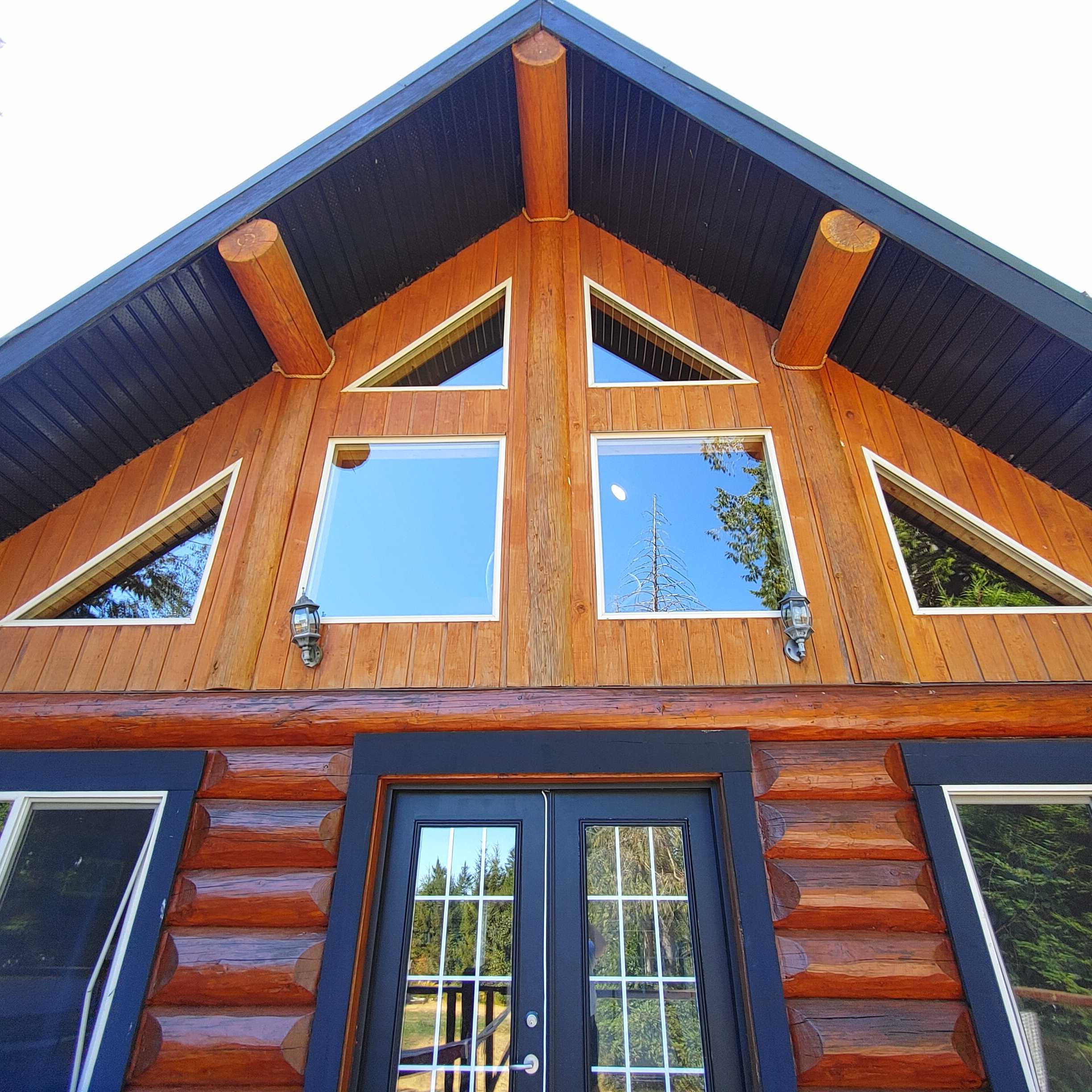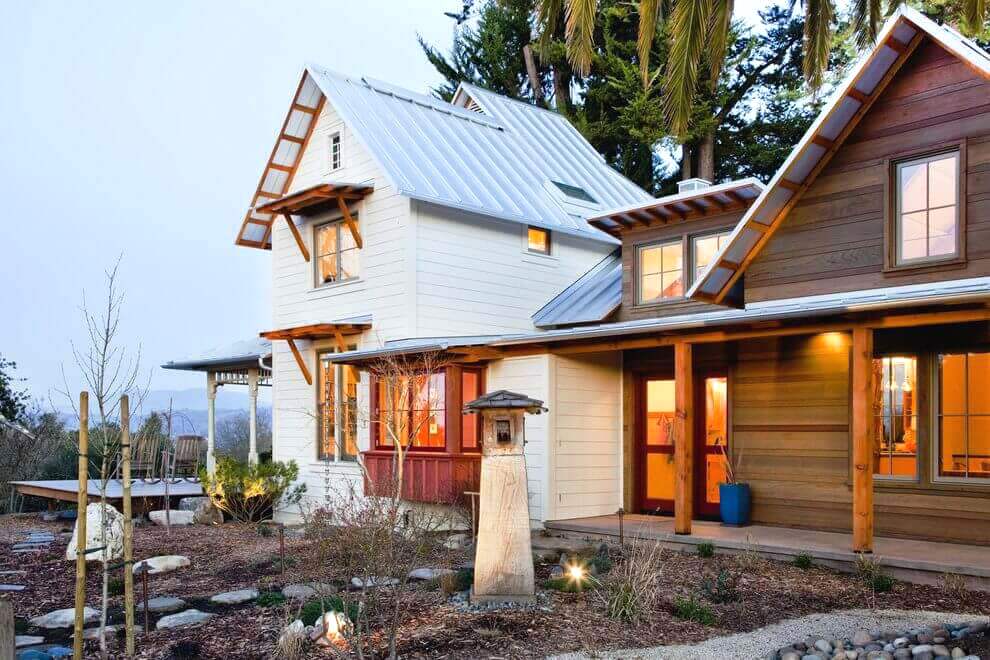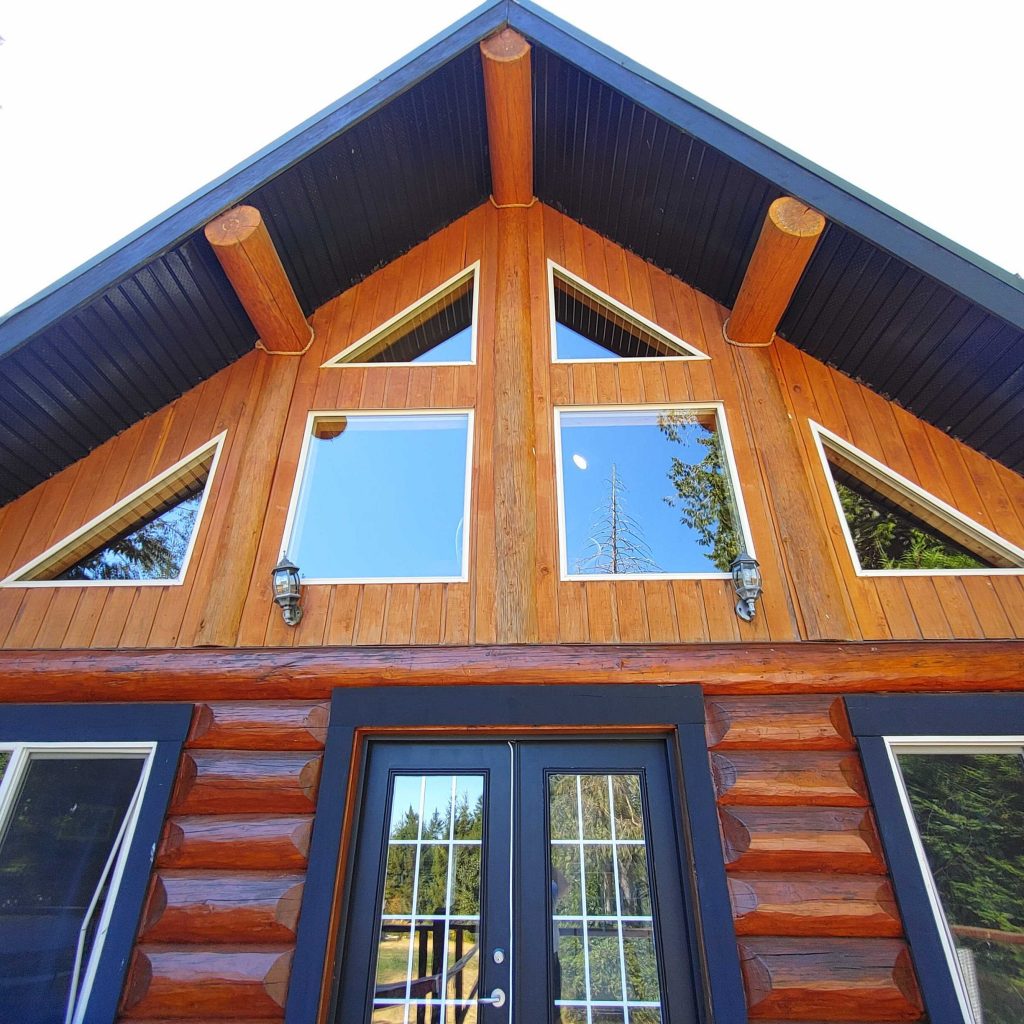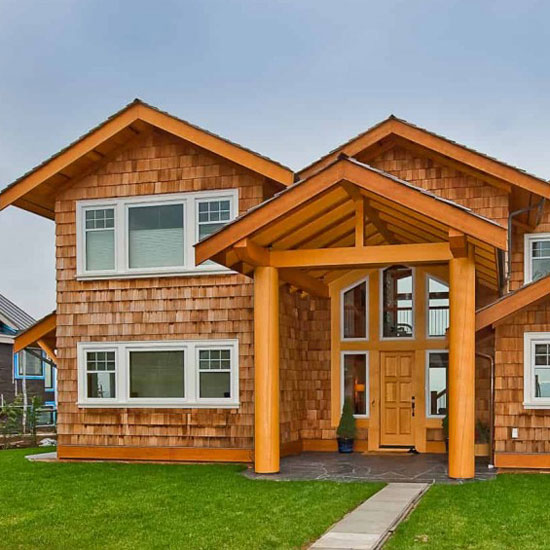
7 Styles of Cedar Siding
The straight grain in Cedar makes it a very stable wood when turned into siding. Being slightly harder than other softwoods, Cedar comes with a host of benefits when used as a siding because it is less likely to cup, split or swell. Cedar is largely admired for being resistant to rot and many insects. Whether you choose to redo the entire house or just sections of it in Cedar siding, here are some great siding styles you can choose from to create the right aesthetic for your home.
Lap Siding.
Probably the most common form of siding is the lap siding, also known as bevel or clapboard siding. This type of siding is created by sawing a board lengthwise in a slight pie shape, creating a narrower edge on one side. Starting at the bottom of the wall, the siding boards are slightly overlapped on top of each other as you move up the wall, thus the name “lap siding”. This type if siding layout is durable and sheds water quite well as there are no edges to absorb and hold moisture.
The more overlap there is with the boards, the sturdier the structure will be, with the average exposure being from four to eight inches. A smaller exposure area is a more expensive look as it will require more pieces of siding to achieve. Although Cedar doesn’t necessarily require any staining, periodic staining and painting can help to keep it looking fresh and vibrant for decades. If you live in a particularly wet climate, you may wish to do some caulking around the edges to help reduce any weather damage.
Drop Channel Siding.

Drop channel siding is probably one of the most versatile styles of siding because it can be installed horizontally, diagonally, or vertically. This type of siding is very popular with cabins. As the name suggests, this siding is achieved by cutting a small groove down the long edge on the bottom of the board, and then milling down the top edge which would be able to fit snuggled into the grooved edge as the siding boards are overlapped on top of each other.
An added benefit to this type of siding is the overlapping edge on the grooved side of the board which then overlaps the adjoining piece. This small ledge is perfect for allowing any water to bead from the board and not slip into any nooks or crannies. Another benefit is the how it allows the wood to expand and contract with the temperature changes without compromising the structure.
Drop channel siding can provide a rustic appearance to the exterior of the home and the partial and overlapping beveled edge creates interesting shadow lines.
Tongue and Groove Siding.
Just like drop channel siding, tongue and grove siding can also be installed in any direction. As its name would suggest, each board is milled with a groove on one side and a corresponding tongue on the other to allow the planks to interlock securely together and create a smooth surface. This type of joinery is often used in antique wood flooring.
Split Logs.

The concept of the split logs is perfect for anyone who logs the log cabin look, but still loves their current more modern home. Regardless of the size of your home, this look can establish a cozy ambience and create a more inviting atmosphere. To create this look the wood must be sawed with the bar still attached. One side of the board retains its curved, natural log appearance, while the underside is flat so that it can be attached to the wall, giving the final appearance of logs.
It is quite common to provide a protective sealant to this type of siding to assist with sealing out moisture and preventing insects from venturing behind the panels. Maintenance is very similar as with any other type of cedar siding.
Board-and-Batten.
This historic style is commonly used on the exterior of barns and other farm buildings. Installed vertically, it is made up of alternating wide and narrow boards. The wide boards are spaced evenly across the exterior with the narrow boards nailed over the space between then. The batten is the narrow stip.
This particular style allows for greater expansion and contraction of the wood, developed by farmers who often used unseasoned wood and varying widths of boards. Nowadays the need for this not necessary as most wood used in siding has been properly seasoned. In the case of cedar, it naturally resists this type of movement, which makes it so perfect to use as siding.
Shake Siding.
Shake Siding looks a lot like shingles but is thicker and more durable. Shake can more of a roughhewn cut to it, and are sometimes sawn by hand. Shake can be purchased in 16, 18, or 24-inch lengths, and are usually attached to a sheathing starting at the bottom of the wall. Each layer overlaps the other, providing a very rustic, course look to the exterior of any home.
Because of the rough nature of the wood, it’s important to check building codes in your area to see if they are permitted to be used as the nature of the rough nature of the wood in some areas is cited as a fire hazard. It’s important to treat them with a fire-retardant just to be safe. If you are using anything but cedar, it’s important to properly maintain them in case of splitting of insects. If left unstained, the weather effect on the cedar shake provides a beautiful rustic aesthetic to the exterior of any home.
Shingle Siding.

Shingle Siding is very similar to shake except that the shingles have been smoothed out and are more consistent, giving a slightly more modern look. This type of siding is quite popular on turn-of-the-century homes on the West Coast and can be stained or painted depending on the desired look you want to achieve. They are easy to install and preferred for oddly shaped walls such as turrets.
Much like Shake, is recommended to have them treated with a fire-retardant and check building codes in your area to be sure that they are allowed. Often this type of siding is only prohibited in area that see frequent fires. Again, if you’re using Cedar, minimum maintenance will be required as the wood is already insect and rot resistant. And if left unsealed, will age nicely over time.
With our decades of experience in the forestry product industry and numerous accolades, Longhouse can provide the products and the know-how to turn your dream project into a reality. Call us toll-free at 1-800-811-2010 or email us at info@longhousecedar.com to find out more about the products and services we can provide for you.
